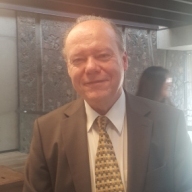
Community

Czech Jewry returning to normal post WWII
MARGOT COHEN
PHOTOGRAPHS SUPPLIED
Pictured: Ambassador Michal Kral
A presentation describing the life of the Jewish community after the Second World War took place at the newly-opened Johannesburg Holocaust & Genocide Centre in Forest Town last week.
The function was attended by Czech Ambassador Michal Kral and Israel’s Ambassador to South Africa Arthur Lenk.
Speaking at a moving presentation on the life of survivors post-1945, Pavlovska traced the history of her department since its founding in 1996. One of the main goals is fighting racism, anti-Semitism and xenophobia.
Prague now boasts a Jewish primary and secondary school, three fully functioning famous synagogues, old people’s home, orphanage, nursery school and more. There are only 5 000 Jews in the country, living in 10 communities.
Many synagogues are not used for prayer any longer, she said. There are around 250 synagogues and they are gradually being reopened as cultural centres and museums.
When the Second World War ended, some of the Jews who came from different concentration camps to the former Czechoslovakia, spoke mostly German. Before the war Jews had to choose between the Czech and German languages. Mothers and children had to use the cemetery as a park.
Anti-Jewish laws in the former Protectorate of Bohemia and Moravia during the period 1939-1941 resulted in more than 75 000 Jews being deported on mass transports to Nisko, Minsk, Lodz and mainly Theresienstadt.
Life was vastly different for Prague Jews after 1945. Home was no longer home. Outbreaks of typhus and death marches had dwindled their ranks, besides the mass killing in the camps.
By mid-May 1945, the Jewish Region agency was registered with the aim of getting back many of the 153 Jewish communities. “Prague was not destroyed by the Nazis; everything was in place, only many of the people they knew were missing,” commented Pavlovska.
During the period 1946-1948, Prague became a halfway house for Jewish refugees. More than 250 000 of them were crossing the country. By 1948 the Communist Party took power and many Jews left Czechoslovakia and changed their identities from German to Jewish.
Some who stayed became members of the Communist Party, but the Jewish community still celebrated its religious holidays. The Old Synagogue which is 800 years old, is still in existence and very much used, Pavlovska said.
In the “Prague Spring” of 1968, many Jews left and there was no rabbi active in the community. By 1989 a new rabbi – Karol Sidon – became rabbi of Bohemia and brought stability to the community.
A Reform Movement began in 1990 when Rabbi Herschel Gluck of Moravia arrived. His arrival gave a boost to Jewish education.




